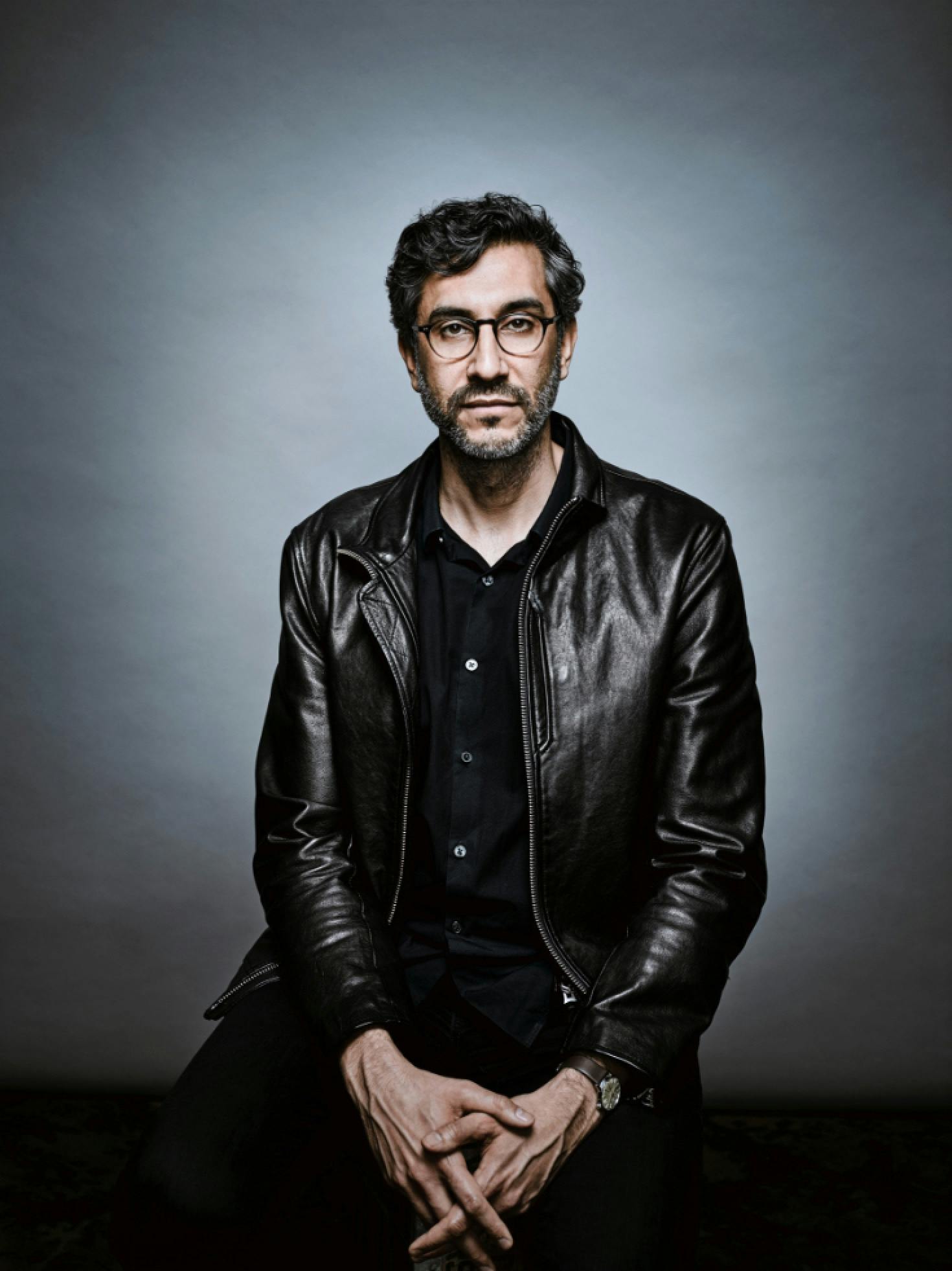With a point of view like no other, director Ramin Bahrani translates The White Tiger for the screen.
Reading even the earliest drafts of his friend Aravind Adiga’s novel The White Tiger, Ramin Bahrani was struck by the power of the story — a knotty, darkly comic tale of India’s class struggles, set against the backdrop of expanding globalization. “I remember when I read it, I just said, My God, if this doesn’t get published, there’s something wrong in the world,” the Iranian American writer-director says, looking back. “It was so good, even in rough form.”
The White Tiger was published in 2008, and went on to win the Man Booker Prize. More than 12 years later and Bahrani’s thrilling film adaptation retains the novel’s complexities and twists. It’s his most expansive production yet, following such powerful, personal films as Man Push Cart, Chop Shop, and 99 Homes, as well as the TV movie Fahrenheit 451. Adarsh Gourav stars as Balram, a man from humble village origins whose fortunes are forever changed when he secures a position as the driver for a wealthy Delhi couple, Ashok (Bollywood superstar Rajkummar Rao) and his American-born wife, Pinky Madam (Priyanka Chopra Jonas).
Bahrani says he felt an awesome sense of responsibility to the story and to its author. “Adiga told me that I could do whatever I wanted, which was so freeing,” he shares. “Even if my friend hadn’t written it, it’s a book I would’ve loved to make. You want to get it right.”
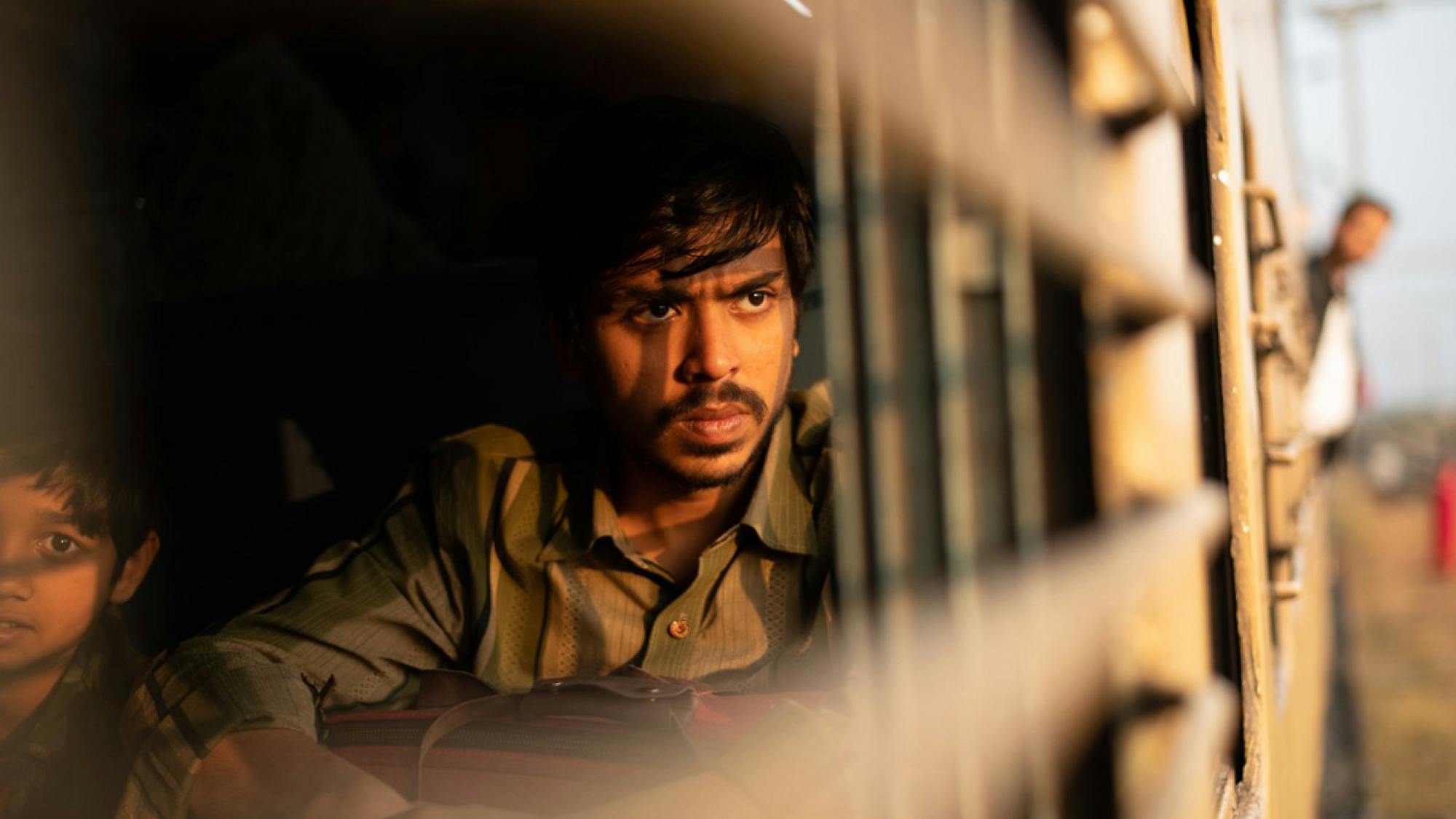
Adarsh Gourav as Balram
Ramin Bahrani spoke to Fast Company editor-in-chief Stephanie Mehta for The Official Podcast of The White Tiger.
Stephanie Mehta: Why was this the right moment to bring The White Tiger to the screen?
Ramin Bahrani: I had always wanted to make it into a film from the moment I read it. When The White Tiger came out in 2008, I was making films — Man Push Cart, Chop Shop, Goodbye Solo — with characters that we don’t normally see in movies. Those were really hard to get made. This wasn’t an easy project to do at that time, on that scale; The White Tiger is an epic story. Also, it was Aravind’s first book, and neither of us felt it was the right moment.
Four or five years ago, Aravind contacted me. We usually talk once a week, and in our weekly call he just said, “If you think it’s the right time, I’m down for the White Tiger getting made.” That’s what triggered me to be like, “O.K., great. If you feel it’s the right time, I’m ready. I think I can do this.”
What challenges inherent in shooting this story were foremost in your mind?
RB: I definitely wanted to keep the voiceover — it’s a first-person-narration novel. I had not done that in any of my feature films. (I had made a short film called Plastic Bag, which is the existential journey of a piece of plastic over a great period of time. I’d gotten Werner Herzog to do the voiceover, and that was my one experience using voiceover!) I just revisited favorite films that have that structure, like Kind Hearts and Coronets and Jules et Jim. Coming up into modern cinema, Fight Club and Goodfellas were key films I studied.
Aravind’s novel has such a sarcastic tone to it. It’s a very quick read, but the second half of the novel slows down in a great way. Something very pivotal happens in the middle of the book. I was looking at movies that have tonal or structural shifts. Full Metal Jacket does that. Akira Kurosawa’s High and Low does that. That was fun to play with.
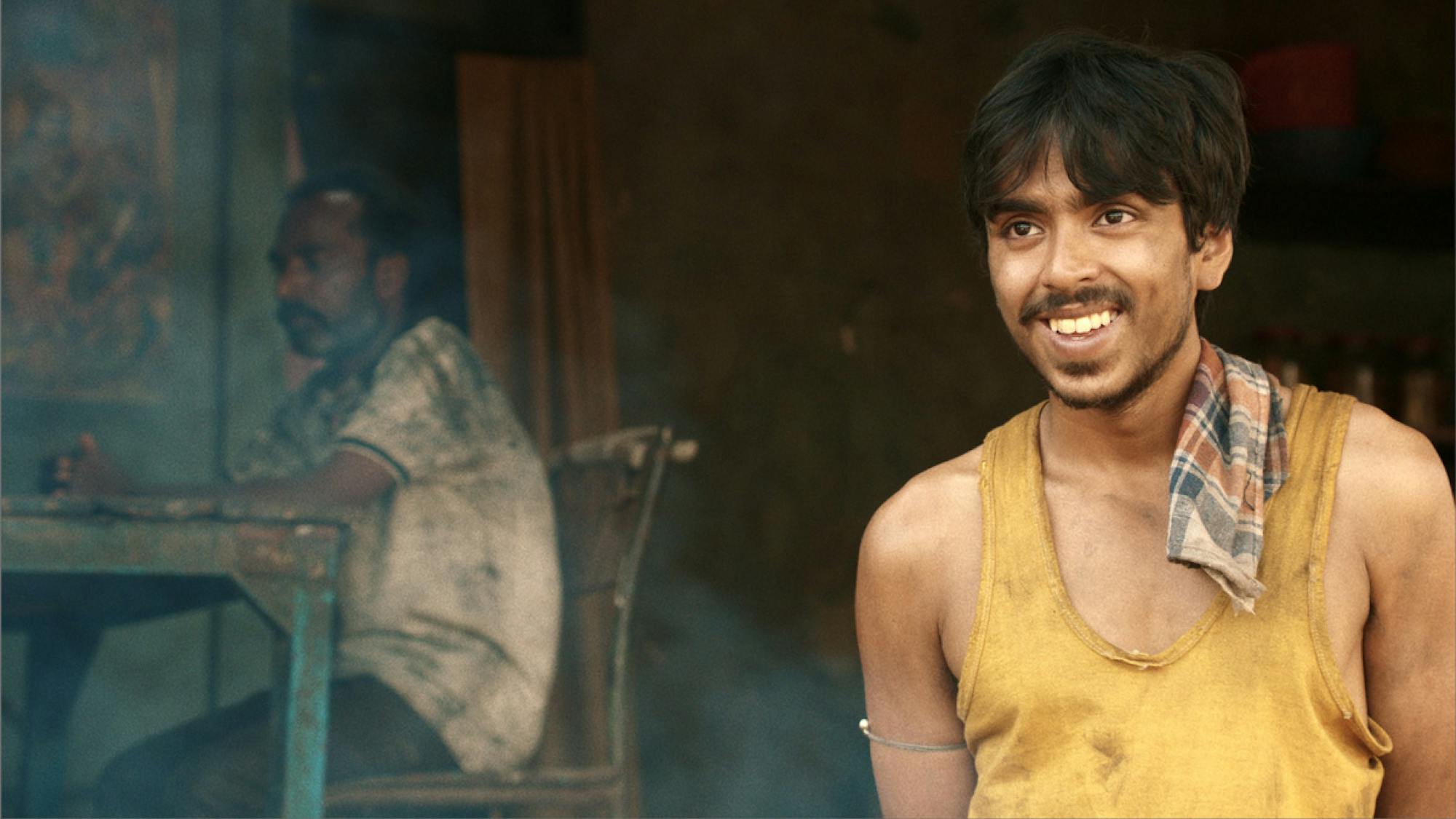
Adarsh Gourav as Balram
In terms of the film’s visual language, what were you trying to capture?
RB: There are a lot of worlds, and we were conscious in the location-scouting and then later in creating the look — color, camera, lens, and design — of how we would take viewers into a world that many of them don’t know. How do you make the locations feel varied, unique, specific, authentic, and express a journey?
Balram’s story starts in his childhood in a village. Well, I had a connection to this because my parents are from Iran and my dad comes from a very poor village. I had grown up with all those stories, and I had lived in that village as an adult. In Balram’s village you’re looking at dusty yellows and handheld cameras. It feels a bit more rustic. When he gets to Delhi, he’s living in a subterranean garage of a very rich apartment complex. We were thinking about neon lights and harsher yellows and greens that would encompass his world down there in that basement. His final stop is as a successful entrepreneur in Bangalore. We were looking at big glass buildings and a lot of Steadicam, where we can feel Balram’s confidence as he moves. All this was to try to take the audience to different worlds.
One eye sees American and the other one sees Iranian.
Ramin Bahrani
On The White Tiger, you’re working with Priyanka Chopra Jonas, one of the most famous women in the world, full stop. What was that experience like?
RB: She was so wonderful to work with. She pursued the project. She had read the novel when it came out, and she loved it. She had seen my films and appreciated them. I think she wanted to be part of something that she thought had value in a conversation globally and in India.
I still wanted to do an audition. She was totally down for it. It was just her and me and my iPhone. I went to a challenging scene. She tried something. I didn’t think it worked, so I said, “That’s an interesting approach. Could you try something else?” She did the same thing, but she doubled down on it, and it worked. She managed to get this moment to work just by going deeper into her own instinct. I was so impressed by that, and by her belief in what she was doing. She’s so smart and intuitive, and as an actor, she is so willing to try anything.
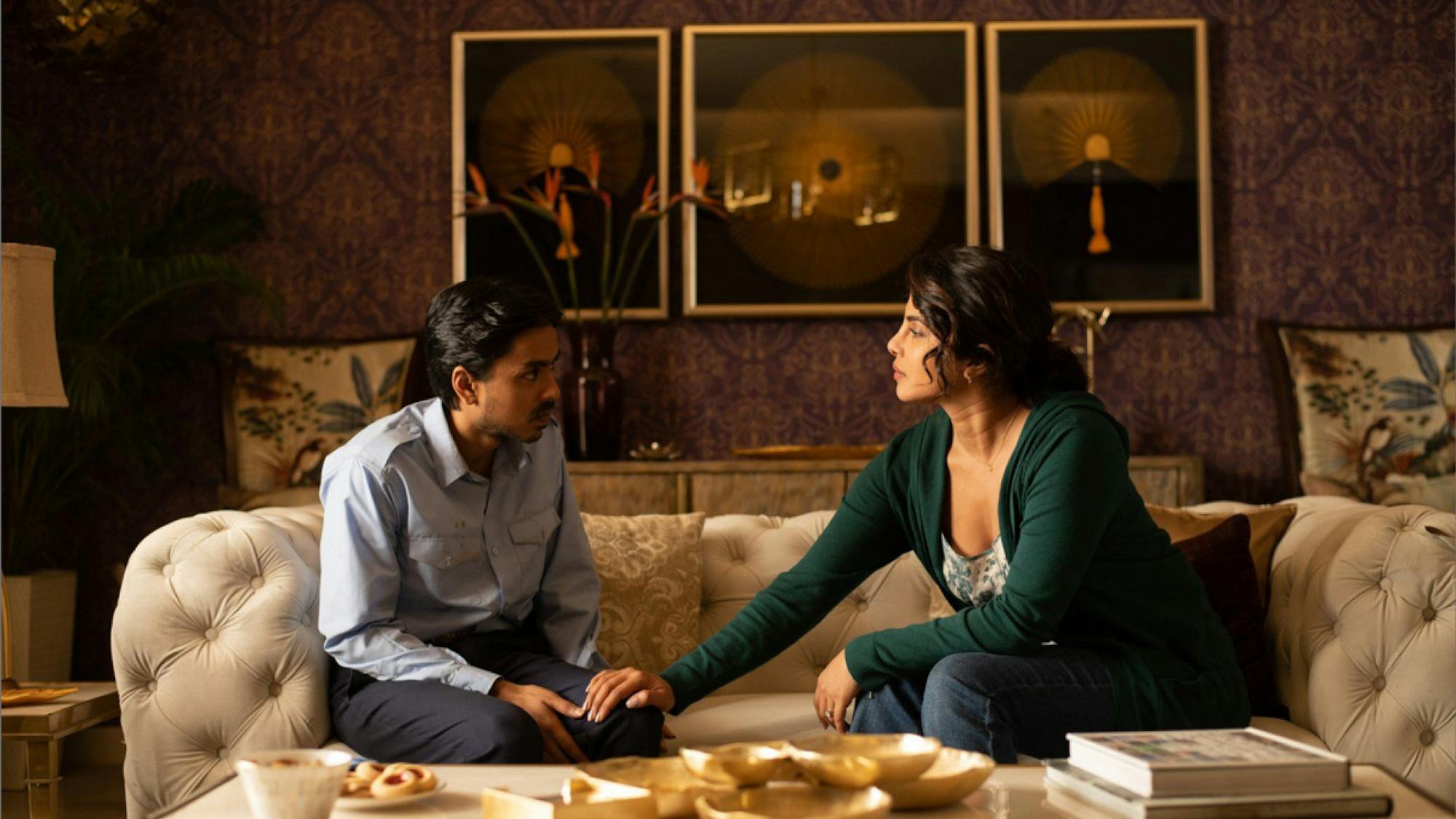
Adarsh Gourav (Balram) and Priyanka Chopra Jonas (Pinky Madam)
How did Priyanka’s performance bring the character of Pinky Madam to life in a different way than readers of the novel might remember her?
RB: Priyanka and I talked a lot about that. The novel is predominantly from Balram’s perspective, so a lot of the other characters aren’t that developed. It’s just what he glimpses of them and how he imagines them in his mind. Pinky Madam is different in the movie than she is in the novel. I kept revising the character the more I got to know Priyanka. There were certain similarities between her and her character: Priyanka’s ambitious, she’s friendly, she’s got a quick wit, she speaks her mind, she has a humor, she has a warmth — and the character had all that. And as I’m down for improvisation and I push actors to do it, thank God she was good at that, too.
Rajkummar Rao, who plays Ashok, is also a huge star. You’ve likened his talent to that of Michael Shannon and Christian Bale.
RB: Rajkummar is a huge Bollywood star. It would be like someone who’s in giant comic book movies but also does these deep indie dramas — the way that you see Christian Bale as Batman or as Dick Cheney, or you see Michael Shannon in Man of Steel but then he shows up in 99 Homes.He has the talent to do that, Rajkummar, and he likes to fully invest. Like Priyanka, he comes fully prepared, and he comes ready to do improvisations that I love. The three actors, Priyanka, Rajkummar, and Adarsh, they also liked each other. I can’t tell you what a difference it makes when the cast like one another. You feel it when you watch the film.
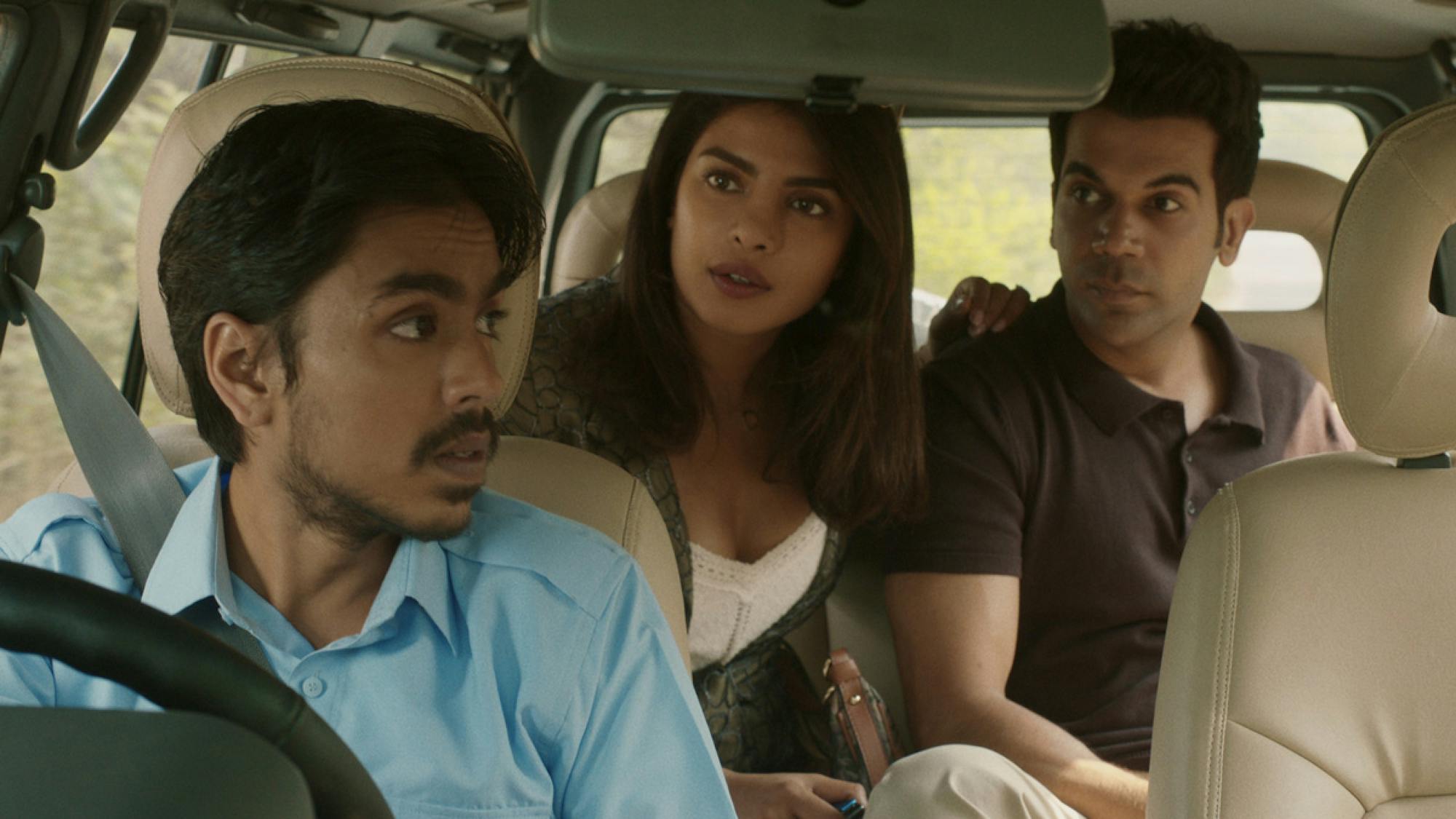
Adarsh Gourav (Balram), Priyanka Chopra Jonas (Pinky Madam), and Rajkummar Rao (Ashok)
This is Adarsh’s first lead role, yet his performance is so assured.
RB: The casting was done in India. I realized the actor playing Balram needed to be from India and preferably needed to be a discovery, not a famous actor. When Adarsh came in, I immediately liked him. We did a reading, and I started doing improvisations with him. If I like an actor, I’ll read with them, and I’ll go wildly off-book. It’s a great way to see if an actor is listening or if they’re just reading what they’ve prepared. I’m into somebody who’s alive, who’s thinking, who has a quick wit even if they need a beat to figure it out. We’re all gonna mess up. Let’s mess up and figure it out. And he was willing to do that.
Why do you think The White Tiger has such global resonance?
RB: I showed it to a friend of mine who is from Zimbabwe but lives in Los Angeles with her mom and her auntie and her cousins, who are all also from Zimbabwe. After the movie, I said, “What did your family think?” She said that they loved it, and that her mom said the movie was about Zimbabwe. I thought that was so sad to hear, but it also shows that Aravind’s book is universal — that feeling of being trapped in a rigged system, of being unable to have your basic human rights and a basic shot at life, feeling that things have been stacked against you by a handful of rich people. I love that Aravind was able to do this with humor, a cheekiness that keeps you entertained through it all.
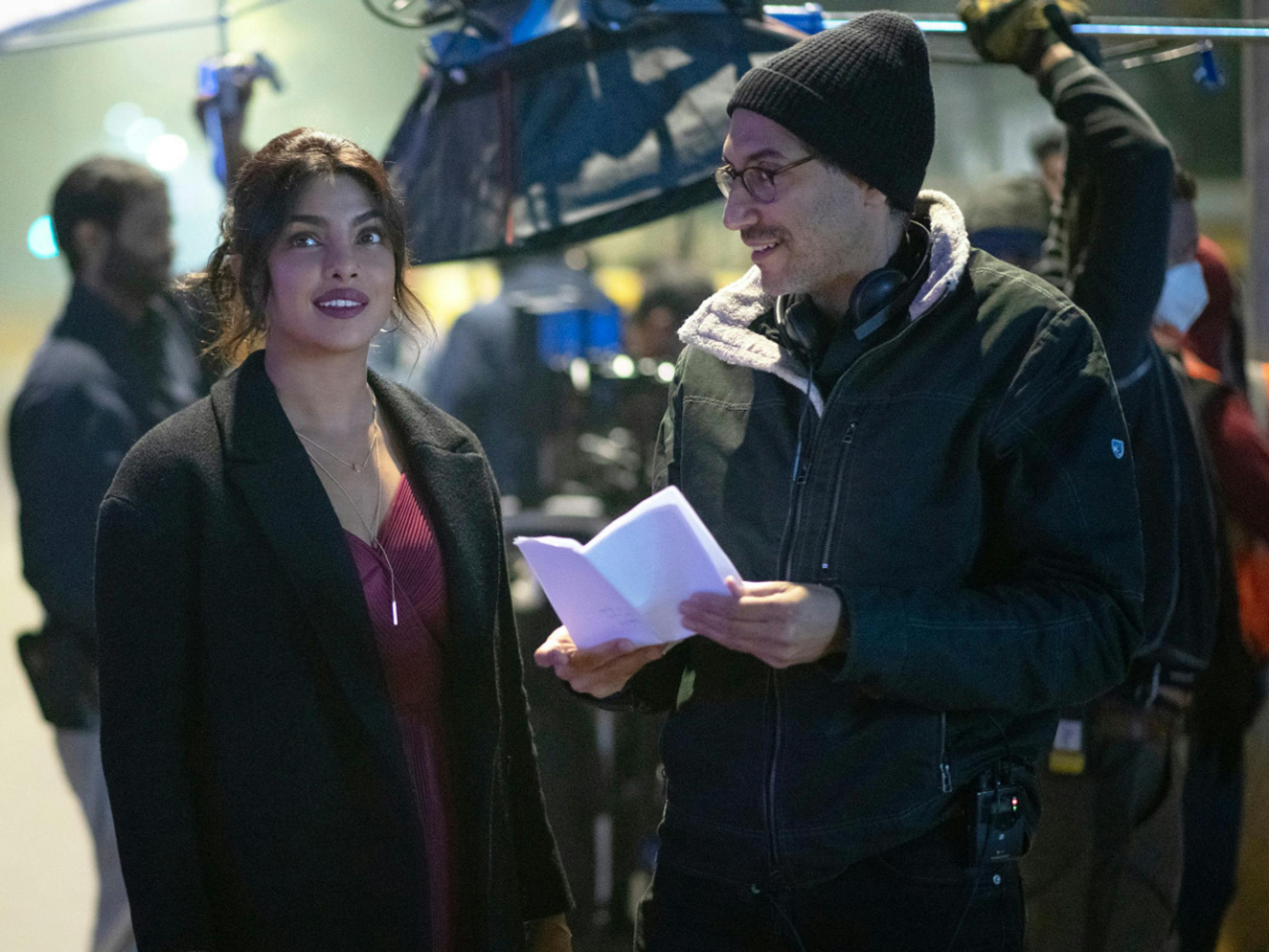
Priyanka Chopra Jonas with director Ramin Bahrani
Photo by Tejinder Singh Khamkha
What made you want to become a filmmaker? How did you land on it as a career?
RB: I grew up doing a lot of visual arts — painting, drawing. As a teenager, I got really into reading, the idea that books could take you deep into a character and also deal with complex ideas, either social or metaphysical, or maybe both. I started writing short stories. Then I had a high school teacher who showed us movies from the 1970s and talked about movies as if they were important. I got captivated by that. It seemed like a way to combine my interest in fine arts and in literature. And I thought I could have a connection to more people.
Once you start down the road, at a certain point you just can’t stop. You just realize that’s what you’re doing, and there’s nothing else you want to do. I mean, the concept of vacation is so weird to me. I don’t get it, and my partner always thinks it’s so weird. I’ve had the good fortune to become friends with Werner Herzog. One day I asked Werner, “Do you know what this means, vacation?” and he didn’t understand it either. Then I felt it was O.K.
There seems to be a generation of immigrant and first-generation American storytellers coming up now who are such keen observers of detail, and have this ability to skewer and deflate stereotypes or conventions. Do you have a theory on what’s at work there?
RB: I can’t speak for the others. For me, I feel I was blessed to have two eyes: One eye sees American and the other one sees Iranian. One thing I came to learn in my time in Iran is if there’s an incident happening on the road — a car accident, a disturbance over there to my left — everybody looks over there. I understood that my job was to look in the corner away from where everyone else was looking. Inevitably, I always found something where nobody was looking.
